
views
Preparing for a Restricted Diet

Talk to your doctor. Your doctor will be able to provide you with specific information regarding what restrictions you have with foods and what texture foods you need to consume (soft and mushy vs pureed liquids). Your doctor should also provide you with a timeline of how long you need to follow a modified diet. Ask your doctor to specify exactly what you can and cannot eat. It's better to be very clear and get too much information than eat something that could cause pain or further injury. Also ask if you're at risk for any nutrient deficiencies or if there are types of foods or groups of foods that you should be consuming daily or completely avoiding. It may also be beneficial to see a registered dietitian or nutritionist. These nutrition experts will be able to tailor a diet specifically for your issue and give you examples of types of foods or create a meal plan that's appropriate for you. Ask your doctor for a recommendation.
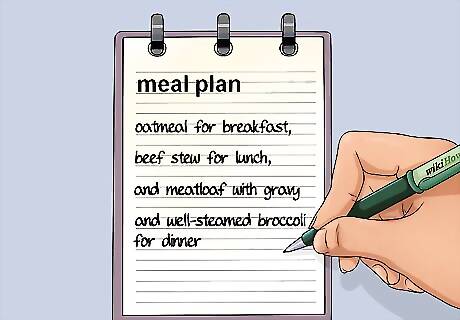
Write up a meal plan. Having a meal plan to follow will be helpful while you're consuming a modified or restricted diet. It can help take the guesswork out of daily meal planning and give you the frame work for an appropriate diet. Write up a week's worth of meals and snacks that are appropriate for your situation. You may need to get creative with different recipes — especially if you're going to be on a modified diet for longer periods of time. Sample meals for a soft diet can include: oatmeal for breakfast, beef stew for lunch and meatloaf with gravy and well-steamed broccoli for dinner. Sample meals for a liquid or pureed diet can include: yogurt with pureed peaches for breakfast, a green smoothie (with milk, frozen fruit, spinach, and protein powder) for lunch, and black bean soup for dinner. Your doctor may have a sample meal plan on hand. Ask to see if you could have a copy to take home to mimic or start you off for a few days.

Go grocery shopping. After you write up your meal plan and talk to your doctor, take a trip to the grocery store to stock up on appropriate foods for your diet. Having the right foods on hand will make your modified diet a little bit easier to follow. Remember, a variety of cooking techniques can be used to get even hard or dense foods to a texture that will be safe for you to consume. For example, apples can be cooked down into applesauce or pureed apples that are easy to chew and swallow. Also consider purchasing foods or items that are already in the form you need and require little to no cooking. If you're only allowed to consume pureed foods or liquids you can buy: low-sodium soups like tomato soup, butternut squash or black bean soup that are completely smooth liquids. If you can consume more whole foods, but need them to be very soft or mushy, you can purchase: frozen fruits or vegetables (once cooked and warmed through, they are very soft and tender) or soups and stews from the grocery store hot bar.
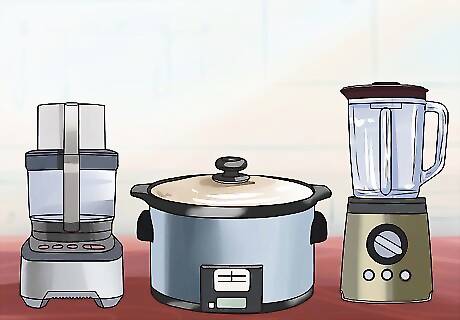
Purchase appropriate kitchen tools. Purchasing appropriate kitchen tools may make your modified or restricted diet easier to follow. Plus, they'll give you more flexibility with your food choices so you can prepare more items at home. A food processor is a great tool and can help break down tougher, denser foods into small pieces or into an almost pureed consistency. You can use them to puree fruits or vegetables or finely chop protein foods (like seafood, chicken, or red meat). This might be a good tool if you can have small, finely chopped food and don't necessarily need to puree everything. Using a blender may be a good idea if you need completely pureed or liquid meals. You can put a variety of foods into a blender to make liquid meals. Blenders are also great because you can put a lot of raw or hard foods into shakes and smoothies. For example, you can put raw spinach into a smoothie and the consistency will still be completely pureed. A crock pot or slow cooker is a great tool for those who are looking to prepare foods to a very soft, mushy, or tender consistency. These machines cook low and slow all day and foods are easily gummed or lightly chewed to be swallowed.
Planning and Cooking Appropriate Meals
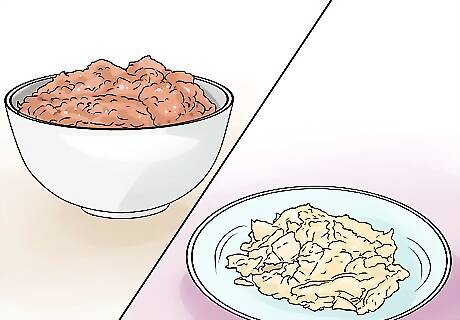
Include soft protein foods. Protein is an essential nutrient to your diet. Going for more than a day or two without protein is unwise and can cause unwanted weight loss or loss of muscle mass. Consuming adequate protein on an all liquid or soft diet may be difficult or unappetizing depending on your diet restrictions or required modifications. If you need to consume a completely liquid or pureed diet, try to incorporate proteins such as: beans pureed into a soup (like black bean soup), pureed tofu in soups, hummus, or puree canned soups and stews to a completely liquid consistency. You can also process meats (ground meat, chicken, or seafood) into a smooth consistency. Adding a little broth or sauce can turn these foods into a more liquid texture. If you can consume soft or tender foods and do not need a liquid or pureed diet, try foods like: meatloaf or meatballs mashed with a sauce or gravy, soft baked fish (like tilapia or salmon), tuna/egg salad, mashed tofu, scrambled eggs, mashed beans, stews or soups, and braised or roasted meats like brisket or pot roast that are fall apart tender.

Consume dairy for an alternate source of protein. Many dairy products work well with restricted or modified diets. Dairy is full of protein, calcium, and Vitamin D and can help you maintain a balanced diet more easily. Add regular or greek yogurt to your day. Yogurts are great smooth foods that are appropriate on a pureed or soft/mushy diet. Regular yogurt may be easier to chew and swallow as it has a thinner consistency compared to greek yogurt. Choose which type is more appropriate for you. Cottage cheese is another very high protein dairy food that will fit into a liquid or soft diet. If you need your foods completely pureed, add cottage cheese to a blender or food processor for a pureed consistency. Drinking milk or adding milk to different foods (soups, stews or smoothies) can offer you another easily swallowed protein source. If you are lactose intolerant or have a milk allergy, try dairy alternatives like soy or almond based milks, yogurts, and cheeses.
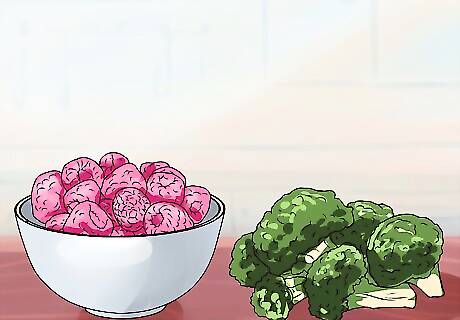
Cook and prepare fruits and vegetables until soft. Many fruits and vegetables, especially when raw or lightly steamed, are much too hard and dense to chew or swallow. Most times, these foods will need to be altered to the appropriate consistency by cooking. Try frozen fruits and vegetables. Many times, when defrosted or cooked/warmed through, these foods are really soft and mushy. Examples include: frozen broccoli, frozen cauliflower, frozen Brussels sprouts, or frozen berries. Steam vegetables until you can mash them with the back of your fork or they are easily pureed into the correct consistency. Many times, over-steaming vegetables (like broccoli) can get them into a soft consistency. Examples include: mashed potatoes or squash, steamed carrots or peas or over-steamed vegetables.
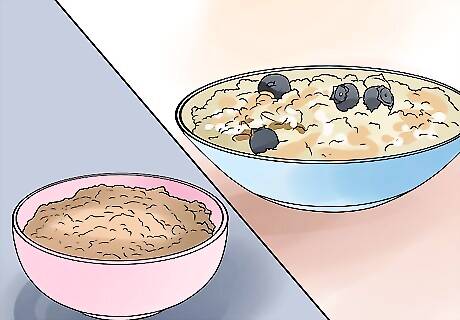
Choose carefully with grains. Grain-based foods like bread, rice or pasta don't always work well on a soft or pureed diet. These foods can be a little sticky or squishy and require more chewing compared to other foods. Choose wisely when incorporating grain-based foods. Oatmeal, cream of wheat, or other hot cereals can be a great option on either a soft or liquid diet. You may need to puree some of these items to get them to a runnier or smooth consistency. You can also blend some grains (like oats) into smoothies.
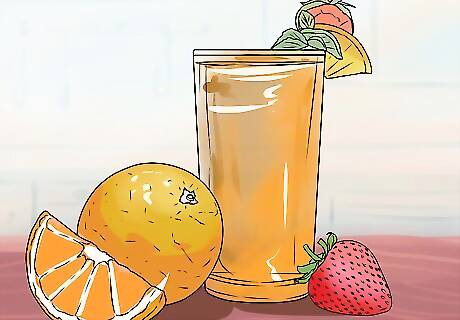
Make soups or smoothies. Making homemade soups and smoothies is a great idea for those needing a pureed or even a soft diet. You can customize them to include a wide range of foods and nutrients. When making either a soup or a smoothie, try adding in different fruits or vegetables. Blending them in will help you get a few servings of these nutrient dense foods into your diet. Soups are a great vehicle for lean protein and vegetables. Cook everything until soft and puree if needed. Smoothies can be made from a wide range of foods including dairy, fruits, vegetables and even nut butters. Blend together for a smooth, liquid consistency. You can also try mixing in unflavored protein powder into both soups and smoothies for an extra dose of protein.
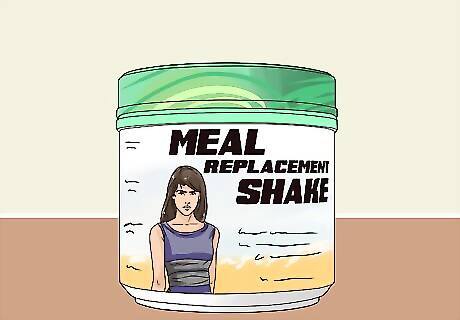
Purchase meal replacement shakes. If you're in a pinch or need a few quick meals, consider purchasing a few meal replacement shakes. Many of these supplements contain adequate protein, calories and vitamins. There are a variety of meal replacement shake options. Look for drinks that will fit into your calorie and protein goals. Many meal replacements come either pre-made or in a powdered form. You can add the powder to smoothies to increase the nutrient level. Be wary of drinks that contain a lot of added sugars or are high in calories. They could cause weight gain if you're not careful.
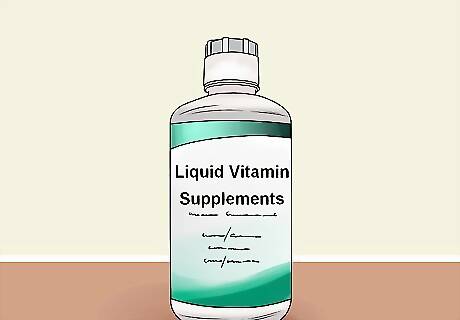
Purchase liquid vitamin supplements. Depending on how long you're on a modified or restricted diet you may want to consider taking a liquid multi-vitamin supplement. This may help you meet your nutritional goals when you're on a diet long-term. Look for a liquid supplement that is a 100% complete multi-vitamin and multi-mineral for the most comprehensive supplement. You can add your vitamins to your meals or drinks or just take them as is. Always check with you doctor prior to starting any supplements.


















Comments
0 comment